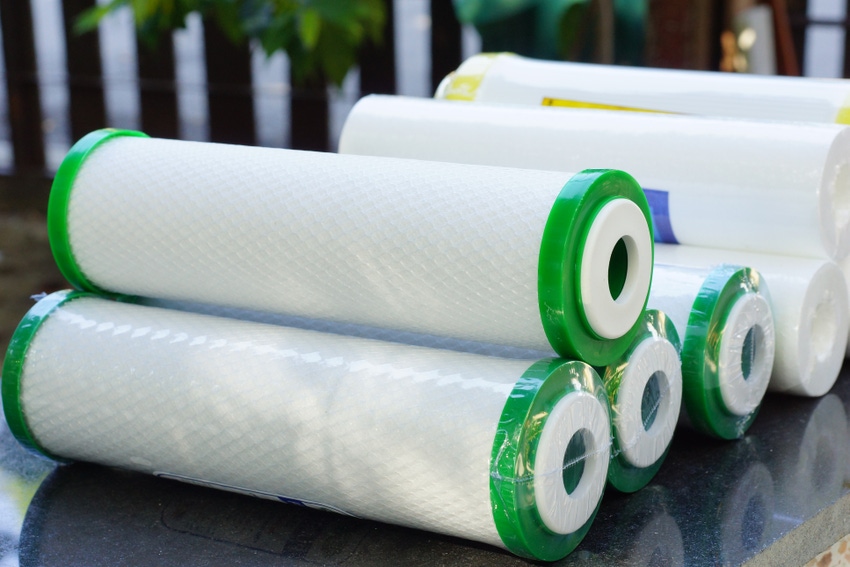Brands including Unilever and Procter & Gamble have ambitious goals for use of postconsumer recycled PP in packaging.

Recyclers have always been set up to accept a mix of material types and formats, but frequently struggle when the packaging stream evolves. To effectively recycle new material types, all materials need to be easily sorted in a MRF and they must have value and consistent demand in the market.
Polypropylene (PP) is a great example of a commodity that was rarely recycled just five years ago, but is now becoming a highly recyclable item through an organized effort to build secondary markets and encourage communities to accept it in residential recycling programs.
According to Scott Saunders general manager at KW Plastics, “The recycling of PP tubs and lids only began in 2012. In February of 2012, KW began meeting with MRF operators and offering a home for these materials if they met specifications. At first, the market grew slowly, but just five years later, KW is purchasing 70 million pounds annually and expects to grow that to 100 million pounds in the next few years.” KW and others want this material to be incorporated into durable goods.
Brands including Unilever and Procter & Gamble have ambitious goals for use of postconsumer recycled PP in packaging. And given the growth in the market, brands committed to zero waste including Keurig Green Mountain are shifting entire product lines to 100 percent PP packaging in order to ensure products are recyclable and have a strong end market.
“Our design for recyclability process includes rigorous testing with recyclers and has validated a strong pull for PP containers,” according to Monique Oxender, chief sustainability officer at Keurig Green Mountain. “That pull creates an incentive for better sortation of PP and effective recycling of our product as Keurig converts to white, PP K-Cup pods. Circular material use is at the heart of the design process, creating value for all across the product life cycle.”
But in order to fulfill that demand and keep PP out of the landfill, the supply chain needs more volume, high quality supply and additional end markets to accept varying types of polypropylene.
The Closed Loop Fund and its investors are investing in systemic solutions to recycling that help unlock bottlenecks like increasing volumes of high value PP and ensuring quality and consistency.
In order to optimize the system to pull PP out of the landfill and into the manufacturing supply chain, we need to invest across the value chain:
End Market Development: While brands are driving demand for postconsumer recycled (PCR) PP, those purchase orders need consistent markets for varying quality levels of PP in order to ensure recyclers see the value from sorting and processing this material. For example, Integrico, which makes railroad ties from PCR, can accept any color PP with higher levels of contamination than is acceptable in brand packaging.
Processing technology: Recylers need systems hat cost effectively create a quality pellet—both black (as most is today) and a neutral color with better applicability to consumer brand packaging. Models like RePoly PRF in Baltimore aim to prove the opportunity for processing PP as washed flake.
Efficient sortation approaches: These may include additional optical sorters at larger MRFs near population centers that have the supply potential needed to make sorting cost effective or secondary MRFs/PRFs that aggregate supply from many MRFs. Eureka in Minnesota’s Twin Cities and Lakeshore Recycling in Illinois both accept and sell PP
Convenient curbside access to recycling of this material: Recycling deserts still exist in many parts of the Midwest, Mountain states and in the South. Even in parts of the country with strong recycling rates, multifamily properties often don’t have the same access. We need to continue to invest in collection of recyclables and ensure municipalities let citizens know that their tubs, lids, caps, and containers can go in their recycling carts. Memphis Tenn. is an example of a major municipality rolling out single stream curbside recycling with clear communications that these materials are accepted.
Inspired by our investors who are working to build markets for PP and the clear market need, the Closed Loop Fund has made funding projects that increase supply and value of PP a priority area for 2017.
To learn more, click here to review the RFP for PP-related projects.
Additionally, the Closed Loop uses examples like PP to help determine the best ways to invest in the recycling of newer material types and formats that aren’t yet accepted at curbside. We regularly consider proposals for solutions to help expand material types that can be accepted in residential curbside recycling programs in the future.
Bridget Croke is vice president of external affairs for the Closed Loop Fund.
About the Author(s)
You May Also Like


